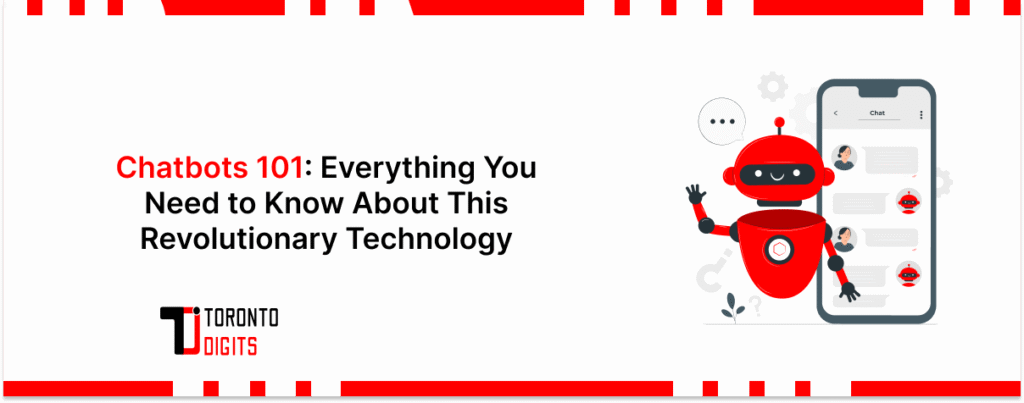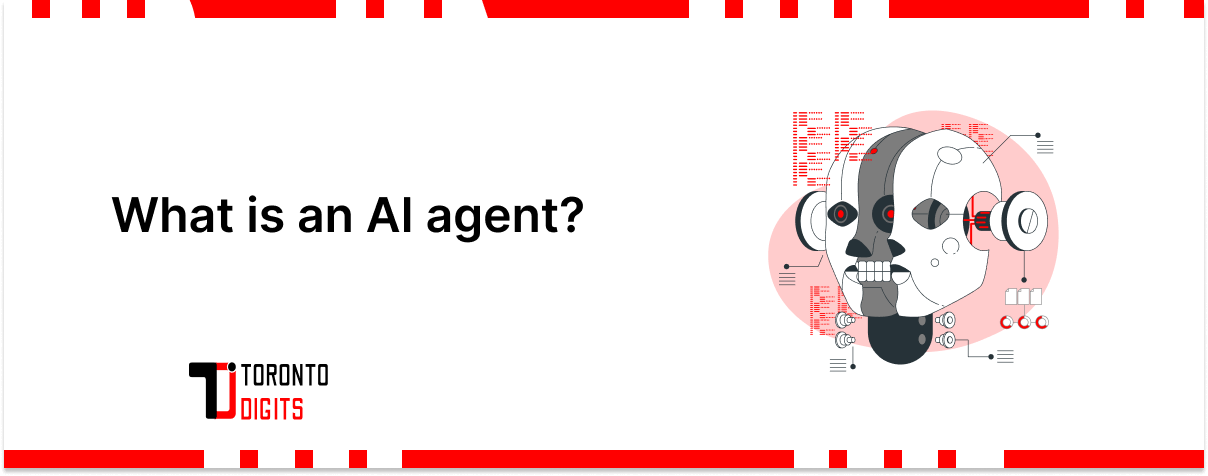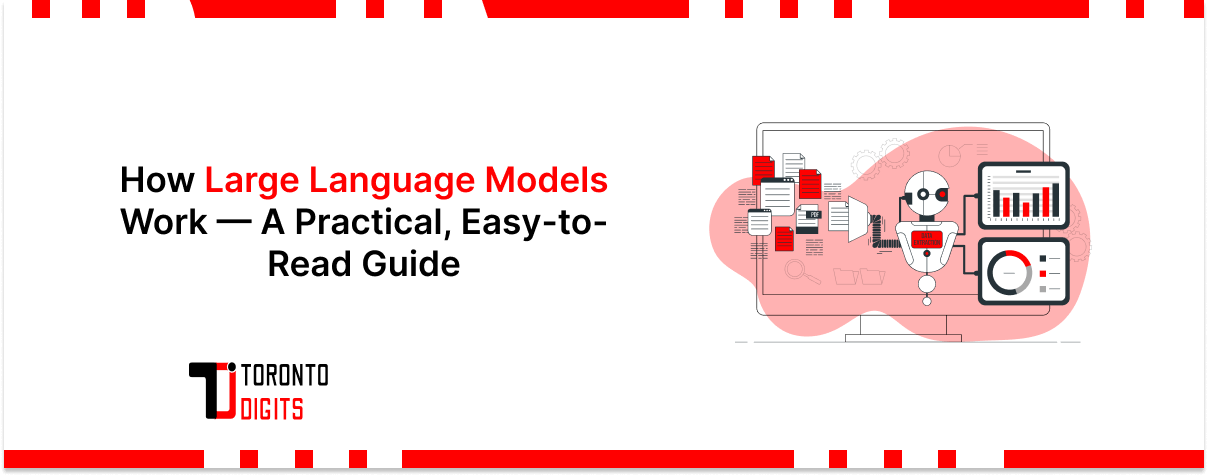Chatbots are smart computer programs that can chat with people just like a human would. Today, they’ve become an essential tool for businesses, changing the way we interact online. Whether it’s answering questions, helping with orders, or guiding users through a website, chatbots make communication faster and easier.
What makes them so important is their ability to give instant replies, offer personalized help, and be available 24/7. They help businesses stay connected with customers at all times, solving problems quickly and creating smoother, more enjoyable experiences.
What Are Chatbots and How Do They Work?
Chatbots are like smart digital helpers that can chat with people online. You’ll find them on websites, apps, and social media, where they answer questions, give information, or help with tasks.
They work using a mix of smart technology, mainly Artificial Intelligence (AI) and Natural Language Processing (NLP). NLP helps chatbots understand what you’re saying, while AI and machine learning help them get better over time by learning from each conversation.
There are two main types of chatbots:
- AI-powered chatbots, which learn and improve as they interact with people.
- Rule-based chatbots follow a fixed set of instructions to respond.
Together, these tools allow chatbots to provide quick, helpful, and human-like responses that make online interactions smoother and more efficient.
The History of Chatbots
Chatbots have been around longer than you might think! Their story began in the mid-1900s, when the idea of artificial intelligence first came to life. One of the very first chatbots, ELIZA, was created in the 1960s. It could mimic a conversation using basic scripts and pattern matching—pretty impressive for its time!
Fast forward to the 1990s, and we saw ALICE, a more advanced chatbot that took conversational abilities a step further. Then came the rise of messaging platforms like AOL Instant Messenger and MSN Messenger, where chatbots started becoming more common.
In the 2000s and beyond, rapid improvements in AI and machine learning gave chatbots a serious upgrade. With the launch of Apple’s Siri in 2011, followed by Alexa and Google Assistant, chatbots became much smarter, capable of understanding natural speech and carrying out complex tasks.
Today, chatbots are everywhere—helping businesses with customer service, online shopping, booking systems, and more. They’ve become essential tools that keep getting better and more helpful every day.
Types of Chatbots
Not all chatbots are the same—there are different types, each built to handle specific tasks and levels of complexity. Here’s a simple breakdown:
Rule-Based Chatbots
Think of these as bots that follow a script. They respond based on specific keywords or commands you give them. They’re great for answering simple, routine questions—like store hours or return policies—but they struggle with anything outside their set rules.
AI-Powered Chatbots
These chatbots are the smart ones. They use artificial intelligence (AI) and machine learning to understand what you’re saying—even if it’s not perfectly phrased—and get better with each interaction. They’re ideal for complex or personalized conversations, like helping you book a flight or troubleshoot a tech issue.
Application-Specific Chatbots
These bots are built for specific purposes or industries. For example:
- In e-commerce, they help users browse products and make purchases.
- In healthcare, they might assist with symptom checks or booking appointments.
Choosing the Right Chatbot
It all depends on what your business needs:
- Use rule-based chatbots for quick, repetitive tasks.
- Choose AI-powered chatbots for more advanced, flexible conversations.
- Go with application-based chatbots if you need something industry-specific.
By understanding the differences, you can pick the chatbot that delivers the best experience for your users.
Benefits of Chatbots: Why Businesses Love Them
Chatbots are more than just digital assistants—they’re powerful tools that help businesses work smarter and serve customers better. Here’s how:
Boosts Efficiency
Chatbots give instant replies, so customers don’t have to wait. They can talk to dozens of people at once, making customer service faster and more efficient.
Available 24/7
Unlike human staff, chatbots never take a break. They’re always online—day or night—ready to help customers anytime, anywhere, even across different time zones.
Personalized Experience
Smart chatbots powered by AI can understand customer preferences and suggest products or solutions that feel tailor-made. This creates a more enjoyable and satisfying experience.
Saves Money
By automating routine tasks, chatbots cut down on the need for large support teams. This means lower costs and better use of your team’s time and energy.
Chatbots vs. Humans: What’s Best for Your Business?
Both chatbots and humans have their strengths—it’s all about knowing when to use each. Let’s break it down:
Where Chatbots Shine
- Always Available: Chatbots never sleep! They’re ready to help 24/7, no matter the time zone.
- Handles Volume Like a Pro: Got lots of customer questions at once? Chatbots can manage them all at the same time—no waiting in line.
- Fast and Efficient: They deliver quick answers and streamline tasks, making your operations smoother.
Where Humans Still Lead
- Handling Sensitive Issues: Some conversations need a human touch, especially emotional or complex situations.
- Empathy and Flexibility: AI can learn a lot, but it still can’t fully match the empathy and adaptability humans bring.
- Creative Thinking: When a problem calls for out-of-the-box thinking, humans usually do it better.
The Smart Approach
Use chatbots for quick, repetitive tasks and basic support, and rely on humans when things get personal, complex, or require creativity. The best customer experiences often come from the perfect mix of both.
Chatbot Use Cases Across Industries
Healthcare
Chatbots make healthcare more convenient by helping patients book appointments, reminding them to take medications, and even giving basic health advice.
Real Example: Babylon Health uses a chatbot that gives personalized medical tips based on your symptoms.
Finance
In banking and finance, chatbots handle customer questions, help manage accounts, and offer financial guidance, making services faster and more accessible.
Real Example: Erica from Bank of America helps users track spending, pay bills, and improve financial habits.
E-commerce
Online shopping gets easier with chatbots that help you find products, suggest items based on what you like, and guide you through the buying process.
Real Example:Sephora’s chatbot gives makeup advice, recommends products, and helps customers shop smoothly through chat.
How Chatbots Can Transform Your Digital Marketing Strategy
In today’s fast-paced digital world, chatbots are becoming game-changers for marketing. They don’t just sit on your website—they actively interact with visitors, helping them through their buying journey while making your brand feel more personal and accessible.
Why Chatbots Are a Big Deal in Marketing
1. Smarter User Engagement:
Think of chatbots as your brand’s 24/7 virtual assistant. They guide users through your products or services, answer questions, and help them make decisions—all in real-time. This keeps visitors engaged and more likely to convert.
2. Personalized Experiences:
Chatbots learn from how users interact with them. By understanding user behavior and preferences, they offer tailored product recommendations and relevant content, making every conversation feel personal.
3. Better Lead Generation:
Chatbots are great at starting conversations that matter. They ask smart questions to qualify leads, collect important contact details, and help segment users for targeted campaigns. This makes your lead generation more efficient and data-driven.
Smart Ways to Use Chatbots in Marketing
To get the most out of your chatbot, here are a few key strategies:
- Make It Personal:
Customize the chatbot’s conversations based on each user’s behavior, interests, and past interactions. This helps build stronger connections and keeps users coming back.
- Automate the Boring Stuff:
Let chatbots handle repetitive tasks like sending follow-up messages, running surveys, and delivering promotions. This saves time, keeps your audience engaged, and ensures consistent communication without the manual effort.
In a nutshell, chatbots are not just tools—they’re powerful marketing allies. By boosting user engagement, creating personalized experiences, and simplifying lead generation, they can take your digital marketing strategy to the next level.
The Future of Customer Service: How Chatbots Are Changing the Game
Chatbots are reshaping customer service—and they’re just getting started. Here’s how they’re setting the stage for the future:
24/7 Instant Support
Chatbots are always online, ready to answer questions and solve problems anytime—no more waiting on hold.
Faster, Smarter Service
They handle multiple customer chats at once, speeding up response times and making support teams more efficient.
Personalized Help with AI
AI-powered chatbots use customer data to give tailored responses, making every interaction feel more helpful and relevant.
Smarter with Time
As AI technology evolves, chatbots will become even better at understanding what customers want and how to help them, without missing a beat.
One Chat, Many Channels
Soon, chatbots will be able to support customers smoothly across websites, apps, social media, and more—no matter where the conversation starts.
The Human Touch
The goal isn’t just automation—it’s better communication. Chatbots will focus on being more empathetic, adding a personal feel to digital interactions.
In short: Chatbots are transforming customer service into something faster, smarter, and more human—one conversation at a time.
Creating a Chatbot for Your Business: A Simple Step-by-Step Guide
Want to build a chatbot that actually helps your business? Here’s how to do it—step by step:
1. Set Clear Goals
Start by figuring out what you want your chatbot to do. Whether it’s answering FAQs, generating leads, or handling orders, knowing the “why” helps shape everything else.
2. Pick the Right Platform
Choose a chatbot builder that fits your needs.
Popular options: Chatfuel, ManyChat, or Dialogflow—depending on how complex your bot needs to be and what tools you’re already using.
3. Design the Conversation
Map out how the chatbot will talk to users. Focus on keeping the conversation natural, helpful, and friendly—just like a real person would.
4. Add AI & NLP Features
Make your chatbot smarter with Artificial Intelligence (AI) and Natural Language Processing (NLP) so it can understand what users are really saying and reply accordingly.
5. Test and Improve
Test your chatbot with real users, gather feedback, and keep improving its responses and performance over time.
Why Starting with Clear Objectives Matters
Having a clear plan from the beginning helps your chatbot stay focused on what matters—whether that’s helping customers, saving time, or boosting sales. It also makes it easier to choose the right tools and features.
Bottom line: A well-built chatbot that’s aligned with your business goals can improve customer service, save time, and make your operations run more smoothly.
Natural Language Processing (NLP) in Chatbots
Natural Language Processing (NLP) is what gives chatbots the power to truly understand and respond like a human. It’s the tech behind the scenes that helps bots make sense of what people say—and reply in a meaningful way.
What NLP Does for Chatbots:
1. Understands What Users Really Mean
NLP breaks down the words users type and figures out their intent—whether they’re asking a question, making a request, or just saying hello.
2. Craft Smart Responses
It helps chatbots reply with answers that make sense in the context of the conversation, instead of generic or robotic replies.
How NLP is Getting Better:
More Accurate Understanding
Today’s advanced NLP models are great at catching the subtle meanings in human language, so chatbots can respond more precisely.
Smarter Conversations
As NLP improves, chatbots can follow conversations better—even when topics shift—making interactions feel more natural and less like talking to a machine.
In short, NLP is what makes chatbot conversations feel human. As the tech evolves, chatbots are becoming more accurate, more helpful, and more conversational than ever before.
Top Chatbot Platforms You Should Know About
Looking to build a chatbot? Here are some popular platforms—each with its own strengths, depending on what your business needs:
Chatfuel
Perfect for beginners! Chatfuel is great for building Facebook Messenger bots using a simple drag-and-drop interface. No coding needed, just plug and play.
ManyChat
Ideal for marketing-focused businesses. ManyChat makes it easy to create bots that capture leads, run promotions, and send out messages on Facebook Messenger.
Dialogflow (by Google)
Best for advanced bots. Dialogflow comes packed with powerful AI and Natural Language Processing, making it a top choice for more complex, multi-channel chatbots.
Quick Comparison:
- Chatfuel → Super easy to use, perfect for basic chatbot needs.
- ManyChat → Built for marketing, with tools for lead generation and messaging campaigns.
- Dialogflow → Most powerful and flexible, ideal for businesses needing smart, AI-driven bots.
Bottom line: Whether you’re building a simple support bot or a smart, AI-powered assistant, there’s a chatbot platform that fits your needs perfectly.
Measuring Chatbot Success
Metrics for Evaluation
Measuring chatbot performance involves tracking metrics like:
Response Time: Evaluating the speed of chatbot responses.
User Satisfaction: Gathering feedback and ratings from users.
Completion Rate: Assessing the rate at which the chatbot successfully completes tasks.
Key Performance Indicators (KPIs)
KPIs help gauge effectiveness and improvements:
Customer Retention: Tracking how often users return to interact with the chatbot.
Conversion Rates: Evaluating the rate at which interactions lead to desired actions (e.g., sales, sign-ups).
Examples of Rule-Based Chatbots
Rule-based chatbots operate on predefined rules and offer:
Specific Responses: They provide fixed responses based on predefined rules or keywords.
Limitations: Their rigid structure limits adaptability and complex interactions.
Rule-based chatbots suit scenarios like:
FAQs: Providing immediate answers to frequently asked questions.
Simple Task Automation: Assisting in basic tasks like appointment scheduling or order tracking.
Conclusion
Chatbots have emerged as transformative tools, revolutionizing how businesses engage with customers and streamline operations. The impact of Chatbots is profound and promising, offering a glimpse into a future where convenience, efficiency, and personalization define interactions.
Presently, the Benefits of Chatbots have significantly impacted:
Customer Service
Providing instant assistance, resolving queries promptly, and enhancing user experiences.
Marketing Strategies
Engaging users, guiding them through buying journeys, and contributing to lead generation.
Looking ahead, the future of chatbots holds immense promise. Advancements in AI and NLP will further refine chatbots, making interactions more natural and intuitive. Chatbots will seamlessly integrate into various industries, from healthcare to finance, offering tailored solutions.
Exciting prospects for businesses and consumers include:
Improved Customer Experiences
Chatbots will continue to evolve, providing personalized, 24/7 support and elevating user satisfaction.
Operational Efficiency
Businesses will benefit from streamlined processes, cost-effective solutions, and data-driven insights.
As businesses and consumers embrace this transformative technology, the horizon brims with possibilities, promising a future where convenience and efficiency converge to redefine the way we engage and conduct business.
FAQs
Why are chatbots important for your business?
Chatbots are valuable because they’re always available 24/7. They help you respond to customers instantly, handle common questions, and make your business run more smoothly and efficiently.
What makes chatbots revolutionary?
Chatbots have changed the game in customer service. They offer quick, personalized help anytime, making it easier for businesses to stay connected and accessible.
What are the 4 main types of chatbots?
- Rule-Based Chatbots – Follow set rules and scripts.
- AI-Powered Chatbots – Learn from interactions and get smarter over time.
- App-Based Chatbots – Built into apps to guide and assist users.
- Social Media Chatbots – Work through platforms like Facebook Messenger or WhatsApp to chat with users directly.
What should I know about chatbots?
You should know that chatbots can understand human language, come in different forms, and are powerful tools for improving customer service, boosting sales, and simplifying business operations.
What are the two main types of chatbots?
- Rule-Based Bots – Stick to a script and respond to set commands.
- AI-Powered Bots – Use artificial intelligence to understand and learn from conversations, making them more flexible and helpful over time.




